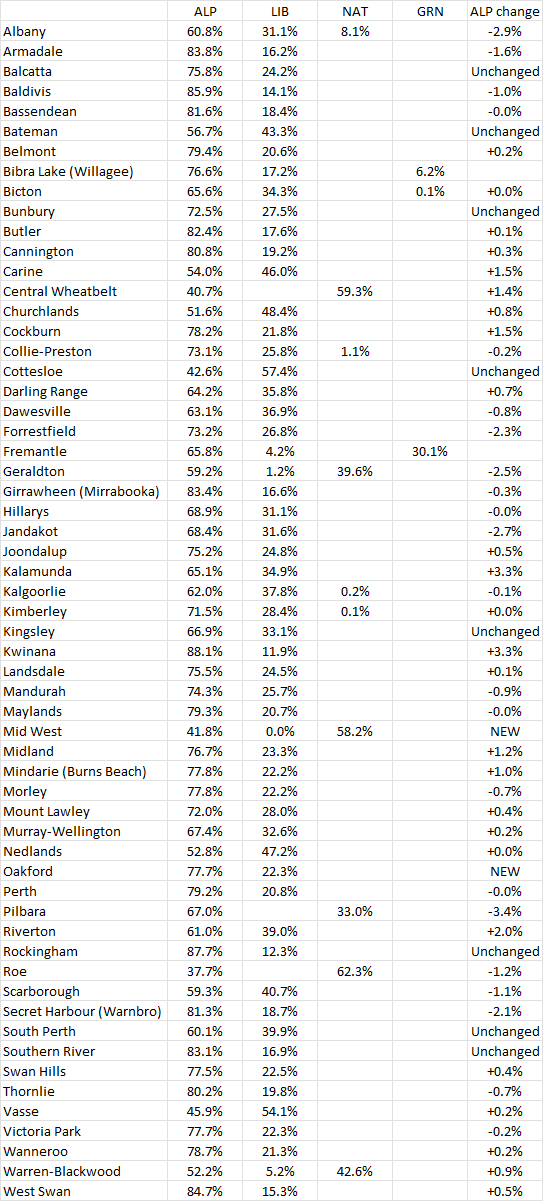Two developments in state politics from South Australian, which continues to go unserviced by opinion polls. The first is a change in management in the Liberal Party, with Vincent Tarzia winner Monday’s leadership ballot by eighteen votes to four over Shadow Attorney-General Josh Teague. This followed the resignation last Thursday of David Speirs, who said he lacked the motivation for what he appeared to acknowledge would be a “fight” for the leadership, while also faulting “the papers and the Twitter-sphere” for reporting “speculation based on speculation based on nothing”.
Vincent Tarzia served as Speaker and later Police Minister during the Liberals’ term in office from 2018 to 2022 and has racked up an impressive electoral record in his eastern suburbs seat of Hartley: he gained it from Labor in 2014, saw off the highest-profile of challengers in Nick Xenophon in 2018, and retained it in the face of the government’s defeat in 2022. Both he and Josh Teague are factional moderates, but Tarzia reportedly won the favour of the conservatives, who constituted a “disciplined” block of nine votes. Remaining as deputy is another moderate, John Gardner, who chose not to contest after canvassing support over the weekend, after some initial reports rated him the front-runner. Also not a contender was Shadow Health Minister Ashton Hurn, who has been touted as the parliamentary party’s most promising prospect, but is presently on maternity leave and focused on other priorities.
Speirs did not not attend the party room meeting to choose his successor, and told FIVEaa radio he would “find it difficult to remain in the Liberal Party” if the “two or three people” who undermined him were elected to leadership positions. Labor enforcer Tom Koutsantonis said it was “pretty clear” that Tarzia was among those he had in mind, and Paul Starick of The Advertiser rated it “more than a fair bet” that he was right. The latter further cited a view among “many Liberals” that Speirs would soon quit the party.
Moving right along, the Electoral Boundaries Commission of South Australia today published the draft report for the redistribution that is conducted roughly in the middle of each term. A feature of South Australia’s redistributions is that the commission goes to the trouble of calculating revised two-party margins, a hangover from the days when it was legally obliged to take into account the elusive notion of “electoral fairness”.
The biggest proposed change is to place Port Augusta, which is divided between Giles in the west and Stuart in the east, entirely within Giles. Stuart is to be compensated through a gain of interior territory from Giles and, closer to the orbit of Adelaide, the northern end of Frome, which in turn is to gain the northern edge of Gawler from Light. This turns Stuart from having a Labor margin of 1.8% in two-party terms to a Liberal one of 1.5%, though it is in fact held by independent Geoff Brock. Brock says he will contest the next election despite the fact that he will then be 75, and resigned his cabinet position in April citing health reasons. Frome’s gains at Gawler make it less safe for the Liberals, reducing their margin from 8.2% to 3.3%, while Giles and Light remain safe for Labor.
Electorally consequential changes are proposed for two marginal seats in Adelaide, both favourable to Labor. One is David Speirs’ southern coastal seat of Black, which is to lose territory in the north to Gibson and gain it in the south from Reynell, cutting his margin from 2.8% to 1.0%. The other is in the northern suburbs seat of King, which Rhiannon Pearce gained for Labor in 2022 with a margin of 2.9%. That now becomes 5.7% with the proposed gain of Craigmore from the Labor stronghold of Elizabeth, balanced by the loss of Salisbury East to Wright in the south.

